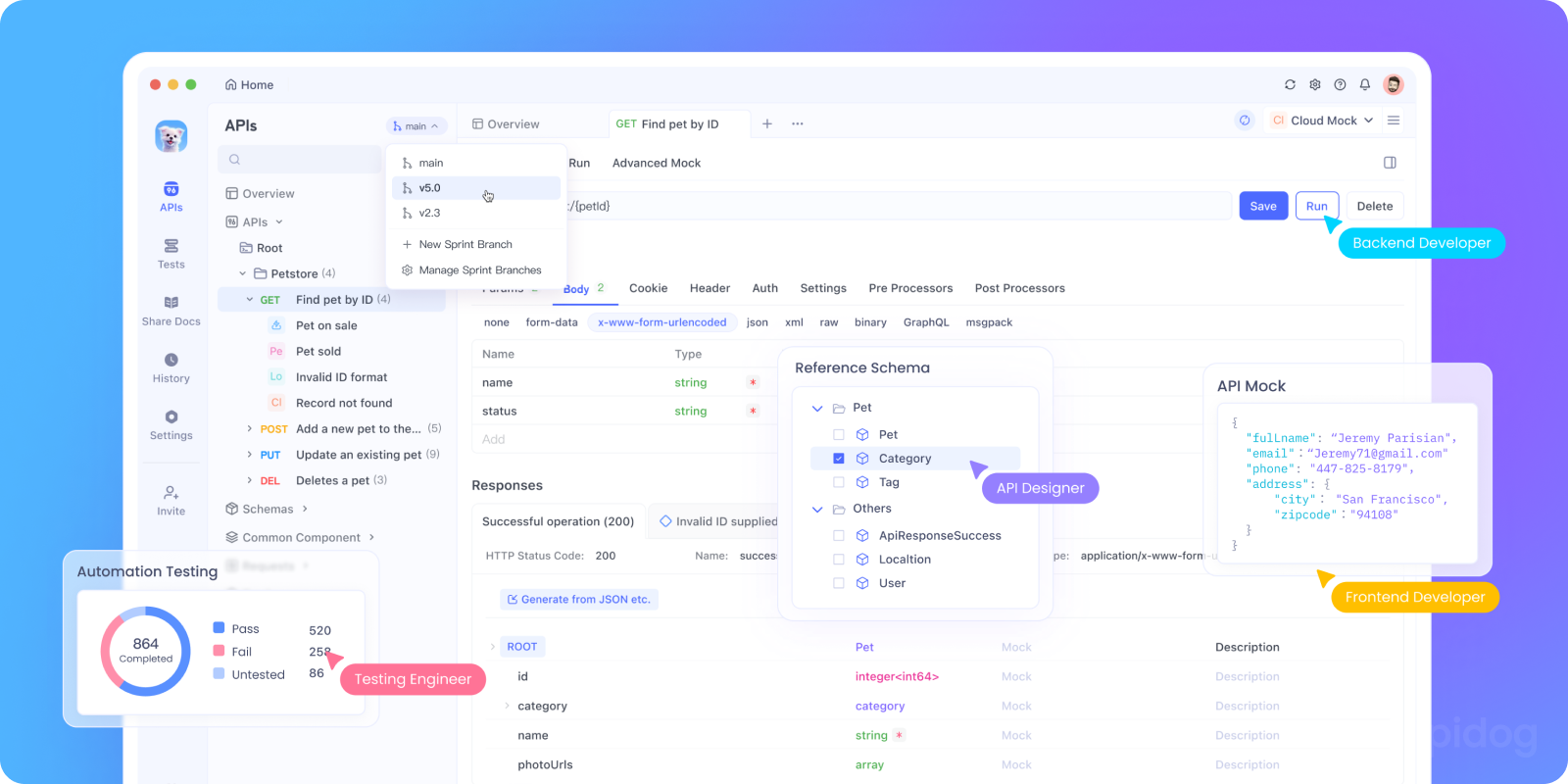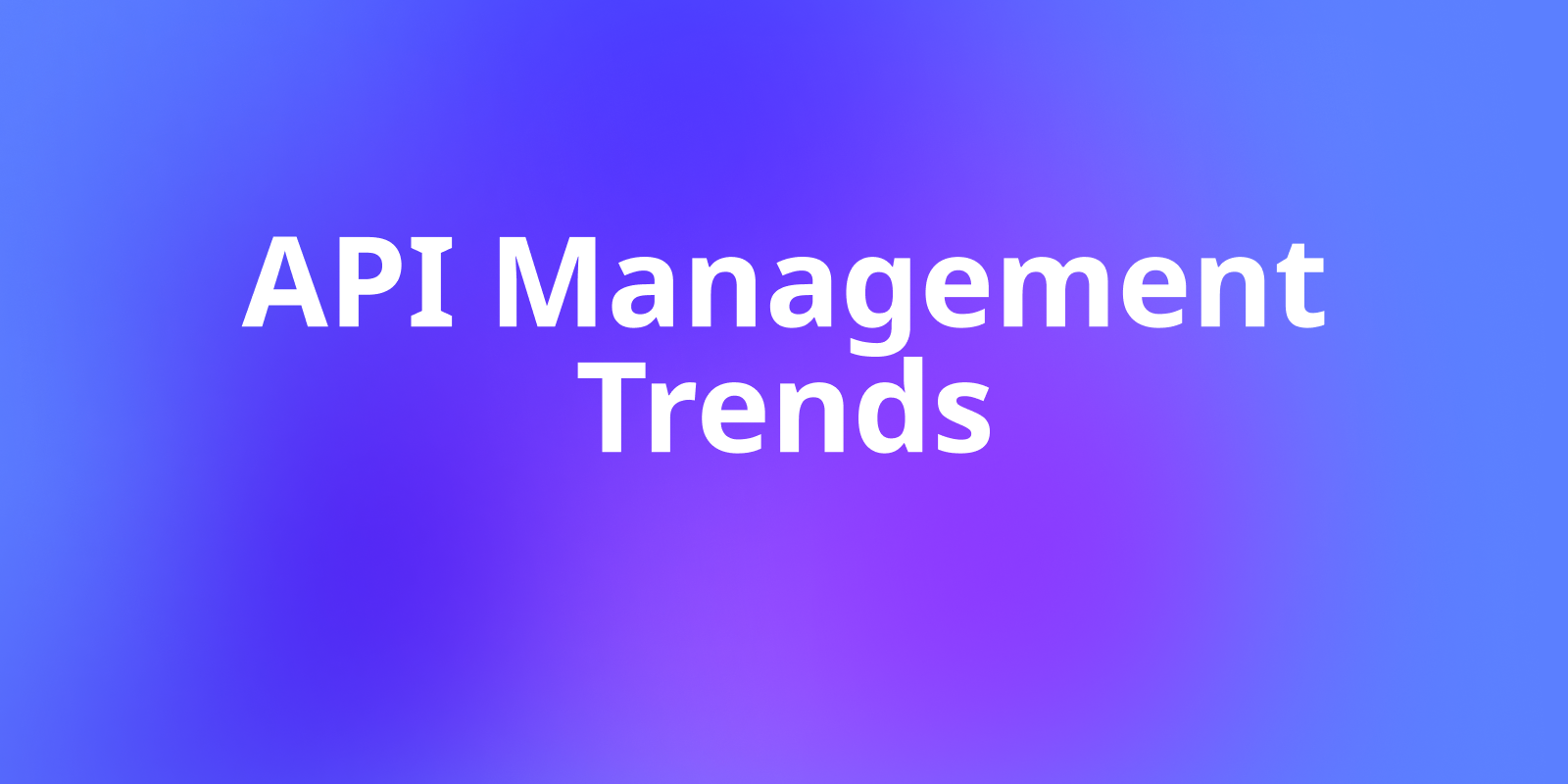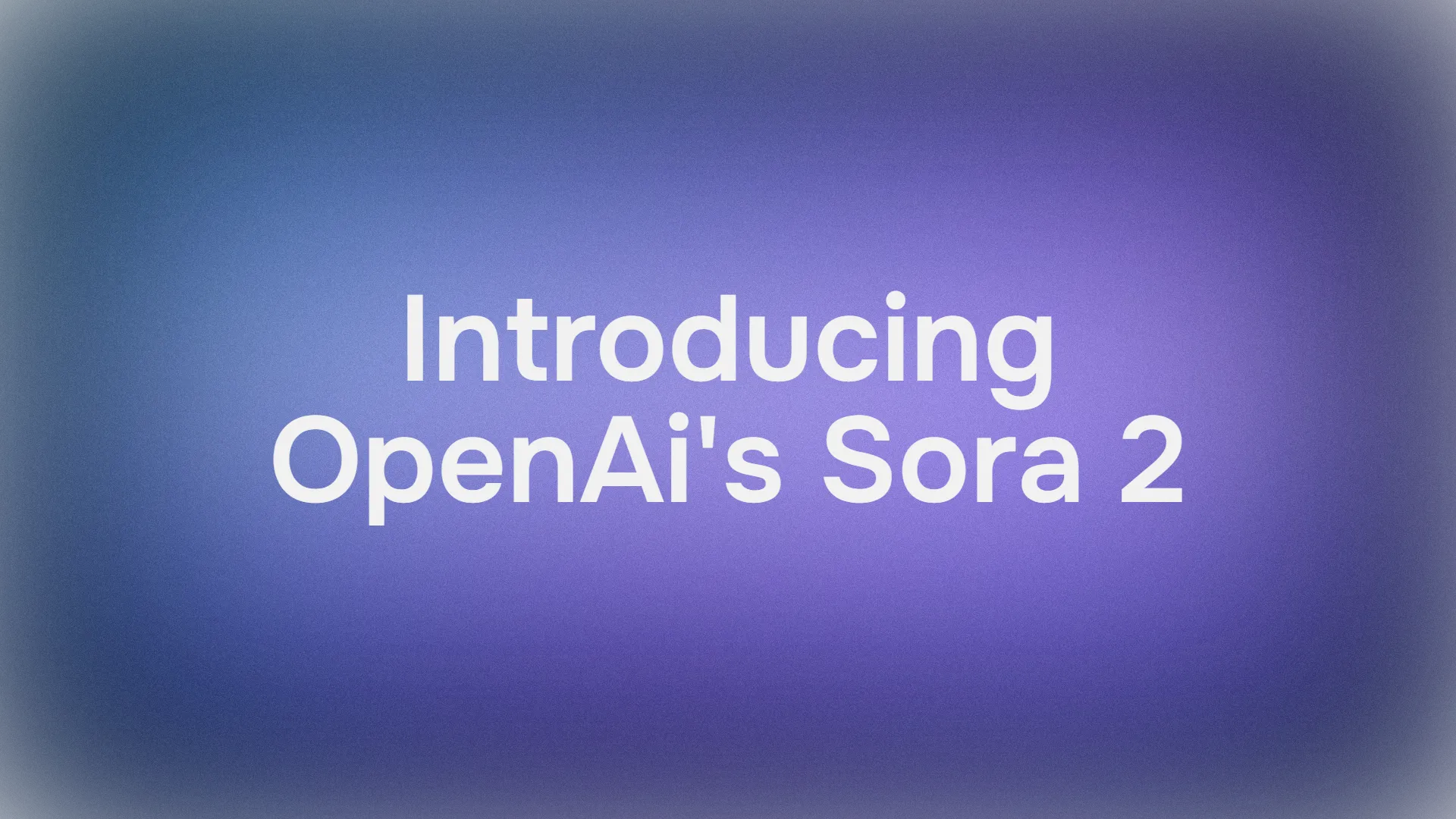If you're navigating the ever-evolving world of digital transformation, you've probably heard the buzz around APIs and API management. APIs or Application Programming Interfaces are the backbone of today's connected software ecosystems, enabling different applications to communicate effortlessly.
APIs aren’t just "tech plumbing" anymore; they’re at the center of digital transformation. Whether running a global enterprise or launching a startup, APIs are the lifelines connecting your services, products, and customers.
But here’s the catch: the more APIs you have, the harder they are to manage. Effective API management ensures these crucial connectors perform smoothly, securely, and scale with demand. And in 2025, the API management game is evolving faster than ever. So, what’s new in API management, and how can you leverage these trends to elevate your digital strategy?
Want an integrated, All-in-One platform for your Developer Team to work together with maximum productivity?
Apidog delivers all your demands, and replaces Postman at a much more affordable price!
Why API Management Matters More Than Ever
In 2025, APIs are no longer just connectors, they are business enablers. Businesses rely on APIs for innovation, faster time-to-market, and unlocking new revenue streams. With APIs facing more complex environments, rigorous management practices are essential to ensure security, performance, and governance.
The explosion of APIs is both a blessing and a challenge. On one hand, they speed up development, connect ecosystems, and create new revenue streams. On the other, they increase complexity and security risks.
API management is the discipline (and set of tools) that ensures your APIs are:
- Secure: Protecting data and preventing abuse.
- Scalable: Handling traffic without breaking a sweat.
- Reliable: Available when customers need them.
- Monitored: So issues are caught before users notice.
In 2025, API management is no longer just about publishing an API and calling it a day, it’s about continuous lifecycle management from design to retirement.
Now, let’s explore the top API management trends shaping the industry today and what they mean for you.
1. Rise of API Security as a Priority
One cannot overstate the importance of security in API management. As APIs expose critical data and functionality, they are prime targets for cyberattacks. Hence, advanced API security mechanisms such as OAuth 2.0, OpenID Connect, JWT tokens, and real-time threat detection are becoming standard.
For APIs, this looks like:
- Running security tests during local development.
- Validating schemas before deployment.
- Integrating API tests into CI/CD pipelines.
Moreover, API gateways now integrate sophisticated AI-driven threat intelligence to detect anomalies and prevent attacks proactively. If you’re managing APIs, ensuring compliant security practices is non-negotiable.
2. API Observability and Analytics Gain Traction
Gone are the days when "deploy and forget" could work for APIs. Modern API management embraces observability, continuous monitoring of API performance, usage patterns, errors, and user behavior. API gateways used to just handle traffic routing. Now, they’re becoming intelligent control points for:
- Dynamic routing based on traffic patterns.
- Automated failover.
- Edge security enforcement.
This data fuels real-time analytics, empowering teams to troubleshoot faster, optimize API calls, and improve user experience.
3. Decentralized API Architectures and Microservices
As companies adopt microservices architectures, the API landscape becomes more complex. Instead of monolithic APIs, there are now hundreds or thousands of micro-APIs interacting dynamically. Managing this complexity requires decentralized API management approaches, supported by service mesh technologies that handle inter-service communication securely and reliably.
APIs must be designed with scalability and modularity in mind to survive this new ecosystem.
4. API-First Development and Design Thinking
"API-first" is more than a buzzword; it's a best practice. One of the biggest trends in API management is the API-first approach. Developing APIs as first-class products, with clear documentation, standards, and versioning, streamlines client development and API consumption.
Why it matters:
- Encourages consistent standards across teams.
- Allows parallel development (front-end and back-end can work independently).
- Simplifies API documentation from day one.
Comprehensive API design tools integrated into management platforms now help teams prototype, mock, and validate APIs before development.
5. Automation and DevOps Integration
Automation in API management is critical to keeping pace with rapid software delivery. Continuous Integration and Continuous Deployment (CI/CD) pipelines now routinely include API testing, version control, and deployment automation.
By integrating API management tools with DevOps workflows, teams foster better quality assurance and accelerate go-to-market strategies.
6. API Monetization and Ecosystem Expansion
Businesses are recognizing APIs as revenue-generating assets. Monetization models, from freemium to pay-as-you-go, enable companies to open new marketplaces and partner ecosystems.
Key API monetization trends:
- Developer portals with instant onboarding.
- Transparent usage dashboards.
API management platforms are evolving to include billing, subscription management, and rate-limiting features to support these business models seamlessly. Managing monetized APIs requires clear documentation, reliable uptime, and strong analytics.
7. Support for GraphQL and Event-Driven APIs
RESTful APIs have dominated, but alternatives like GraphQL and event-driven architecture APIs are gaining rapid adoption. API management solutions are adapting to support these protocols, enabling dynamic query handling and real-time data streaming.
Event-driven architectures are fueling the rise of WebSockets, Server-Sent Events (SSE), and asynchronous APIs. API management needs to adapt by supporting event streams alongside traditional request-response patterns.
This flexibility ensures your API strategy stays future-proof.
8. AI-Powered API Management
Artificial intelligence is changing how APIs are monitored, optimized, and secured.
AI can:
- Predict API traffic spikes and auto-scale resources.
- Detect anomalies that could indicate security breaches.
- Recommend performance improvements based on usage patterns.
Pro tip: Expect API management platforms to integrate more AI-driven analytics in 2025, helping teams catch issues before they impact users.
9. Multi-Cloud API Management
Gone are the days of sticking with a single cloud vendor. Many companies are adopting multi-cloud strategies to avoid vendor lock-in and improve resilience.
The challenge? Managing APIs consistently across AWS, Azure, Google Cloud, and on-prem environments.
Modern API management platforms are evolving to provide:
- Unified policy enforcement.
- Cross-cloud monitoring.
- Centralized analytics dashboards.
10. API Observability and Real-Time Monitoring
In 2025, it’s not enough to have logs, you need observability. That means real-time visibility into API performance, error rates, latency, and usage patterns.
Trends in API observability:
- OpenTelemetry adoption for standardized monitoring.
- AI-based alerting to cut down on false positives.
- Integration with incident response platforms like PagerDuty or Opsgenie.
With Apidog, you can integrate monitoring into your testing process, ensuring your APIs behave as expected before they ever reach production.
11. Developer Experience (DX) as a Competitive Advantage
In the API economy, developer experience is customer experience. Poor onboarding, confusing docs, or inconsistent APIs can drive developers away.
Trends in API DX for 2025:
- Interactive documentation with live API consoles.
- SDK generators in multiple languages.
- Self-service API keys and sandbox environments.
Apidog makes interactive documentation and mock servers a standard feature, helping you deliver a better DX without extra work.
12. Compliance and Regulatory-Driven API Management
From GDPR in Europe to CCPA in California, data privacy laws are shaping how APIs are managed. Financial APIs (PSD2), healthcare APIs (FHIR, HIPAA), and government APIs all come with their own compliance needs.
Expect to see API management platforms offering:
- Built-in compliance templates.
- Audit-ready logging.
- Automated data masking.
13. Sustainability and API Efficiency
Yes, even APIs have a carbon footprint. Efficient API design and management can reduce energy usage and costs. This means optimizing payloads, minimizing unnecessary calls, and consolidating endpoints.
If you want to stay ahead of these trends, you need tools that make API design, testing, and monitoring a breeze. That’s where Apidog comes in. You can download Apidog for free and start managing your APIs with built-in collaboration, documentation, and testing features all in one place.

Remember, tools like Apidog can be your ally in managing this complexity, providing easy-to-use interfaces for testing, documenting, and maintaining your APIs throughout their lifecycle.
Wrapping Up: Stay Ahead with Smart API Management
The landscape of API management is evolving rapidly, combining security, observability, automation, and new architectural styles to support the next generation of digital experiences.
API management is no longer a "back-office" function, it's a strategic business enabler. From AI-powered monitoring to sustainability and API efficiency, the trends shaping 2025 are all about making APIs more secure, reliable, and developer-friendly.
If you want to stay ahead, don't just watch these trends; act on them. Start by using tools like Apidog that let you design, test, and manage APIs in one place. To stay competitive, organizations must embrace these trends strategically. It's free to start, and it puts you on the fast track to API management success.



